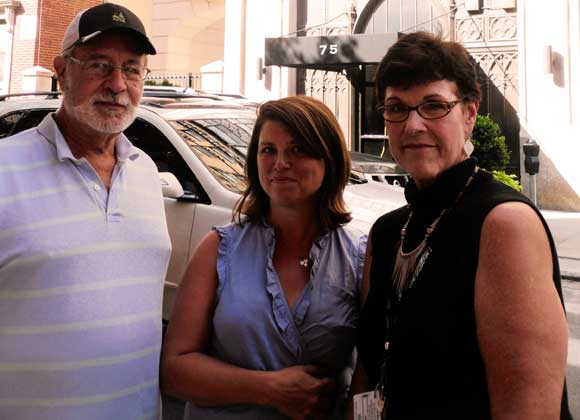A city panel unanimously approved a controversial new historic district in Downtown on Tuesday — despite opposition from residents who demanded that officials remove their co-op building from the landmarked area.
The Landmarks Preservation Commission passed the Borough Hall Skyscraper Historic District, which aims to preserve a slew of early-1900s towers along Court Street — including 75 Livingston St., the only residential building in the district.
“I’m very disappointed,” said Paula Ingram, a local real-estate broker who lives in the 32-story co-op. “It’s outrageous that people are afraid we’re going to rip this building down when we spent millions of dollars to restore it.”
Residents of 75 Livingston St. have long tried to galvanize their forces against the district, complaining that the designation will cause maintenance fees to soar because of the intricate rules of the historic districts.
And they weren’t alone. In July, some of the most powerful names in real estate urged Commission Chairman Robert Tierney to axe the proposal, saying it would hamper new retail in the area around Borough Hall.
But Landmarks officials weren’t buying it.
“If there’s controversy about this district, it’s a misunderstanding,” said Commissioner Michael Devonshire. “There are both physical and financial benefits of landmarking the district. This is what makes Downtown Brooklyn.”
The “Skyscraper” district comprises 21 buildings along Court Street from Montague Street to Livingston Street, including the already landmarked Borough Hall; 13-story Temple Bar Building on Court Street; the 35-story Montague-Court Building at 16 Court St.; and the Municipal Building, which will soon be transformed into a mini-mall.
The Brooklyn Heights Association, a powerful neighborhood group, has pushed for the designation since 2004 in hopes of saving these Romanesque Revival and Beaux-Arts structures.
Executive Director Judy Stanton said it would be ridiculous not to landmark 75 Livingston St., a 1927 building described as a “wedding cake” for its tiers and neo-Romanesque details. It’s among the most beautiful of the bunch.
“Folks will soon learn they will not be forced out of their building due to the costs of the designation,” Stanton said. “Brooklyn will be much better for it.”
Ellen Murphy, president of the 75 Livingston co-op board, countered that residents already spent $6 million in the last 22 years to renovate their building’s façade. She slammed Landmarks for putting roadblocks on people who are already good stewards to their building.
The City Planning Commission has 60 days to approve the historic designation before it moves to the Council for a vote. The Council may modify the proposal if enough residents rally against it. Borough President Markowitz last week came out against the inclusion of the building, so there is still hope that it could be sliced out of the zone.
“I’m very upset about our building, but it’s not over,” Ingram said. “Now we have to start lobbying.”


























